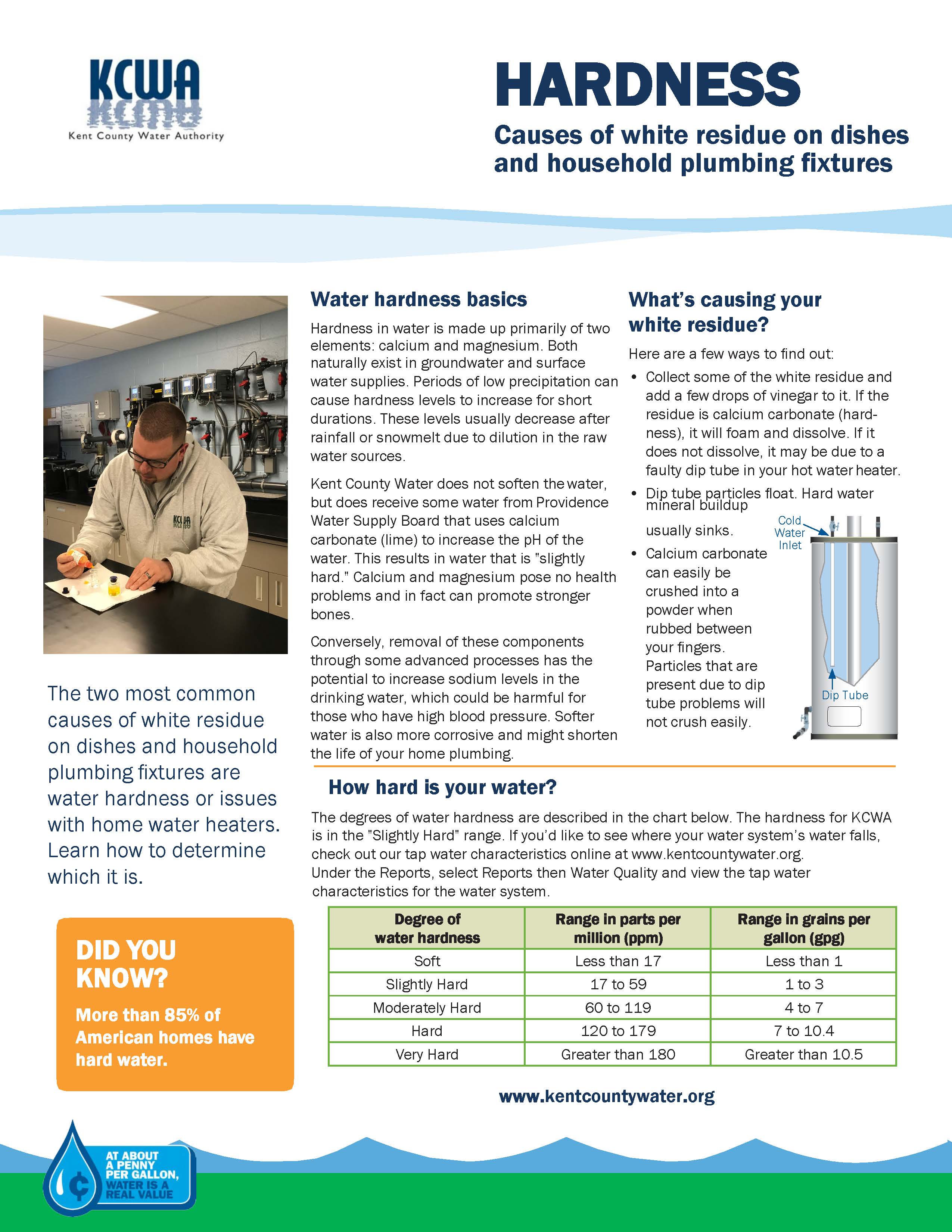KCWA TAP WATER CHARACTERISTICS
Clinton Avenue Booster Pump Station
Mishnock Ultrafiltration Facility
East Greenwich Well

HARDNESS INFORMATIONAL FLYER
Per- and Polyfluoroalkyl Substances (PFAS)
Final PFAS National Primary Drinking Water Regulation
Summary
On April 10,2024, EPA announced the final National Primary Drinking Water Regulation (NPDWR) for six PFAS. To inform the final rule, EPA evaluated over 120,000 comments submitted by the public on the rule proposal, as well as considered input received during multiple consultations and stake holder engagement activities held both prior to and following the proposed rule. EPA expects that over many years the final rule will prevent PFAS exposure in drinking water for approximately 100 million people, prevent thousands of deaths, and reduce tens of thousands of serious PFAS-attributable illnesses.
EPA is also making unprecedented funding available to help ensure that all people have clean and safe water. In addition to today’s final rule, $1 billion in newly available through the Bipartisan Infrastructure Law to help states and territories implement PFAS testing and treatment at public water systems and to help owners of private wells address PFAS contamination.
EPA finalized a National Primary Drinking Water Regulation (NPDWR) establishing legally enforceable levels, called Maximum Contaminant Levels (MCLs), for six PFAS in drinking water. PFOA,PFOS, PFHxS, PFNA, and HFPO-DA as contaminants with individual MCLs, and PFAS mixtures containing at least two or more of PFHxS, PFNA, HFPO-DA, and PFBS using a Hazard Index MCL to account for the combined and co-occurring levels of these PFAS in drinking water. EPA also finalized health-based, non-enforceable Maximum Contaminant Level Goals (MCLGs) for these PFAS.
|
Compound |
Final MCLG |
Final MCL (enforceable levels) |
|
PFOA |
Zero |
4.0 parts per trillion (ppt) (also expressed as ng/L) |
|
PFOS |
Zero |
4.0 ppt |
|
PFHxS |
10 ppt |
10 ppt |
|
PFNA |
10 ppt |
10 ppt |
|
HFPO-DA (commonly known as GenX Chemicals) |
10 ppt |
10 ppt |
|
Mixtures containing two or more of PFHxS, PFNA, HFPO-DA, and PFBS |
1 (unitless)
Hazard Index |
1 (unitless)
Hazard Index |
The final rule requires:
-
Public water systems must monitor for these PFAS and have three years to complete initial monitoring (by 2027), followed by ongoing compliance monitoring. Water systems must also provide the public with information on the levels of these PFAS in their drinking water beginning in 2027.
-
-
-
Public water systems have five years (by 2029) to implement solutions that reduce these PFAS if monitoring shows that drinking water levels exceed these MCLs.
-
-
-
Beginning in five years (2029), public water systems that have PFAS in drinking water which violates one or more of these MCLs must take action to reduce levels of these PFAS in their drinking water and must provide notification to the public of the violation.
PLEASE CLICK HERE FOR THE KCWA PFAS INFORMATION AND FACT SHEET
The Consumer Confidence Reports for the last several years are available below.
Click on the report of your choice to view its contents.

